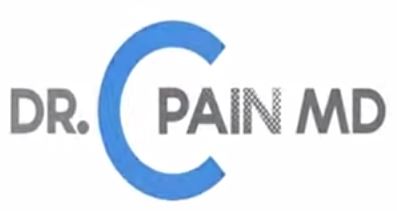If you live with chronic pain, you’ve likely heard the word inflammation thrown around. But what does that really mean — and what can you do about it?
In many pain conditions, inflammation isn’t just a background issue — it’s the engine driving pain forward. Whether it’s osteoarthritis, back pain, or autoimmune disease, persistent low-grade inflammation can sensitize nerves, damage tissues, and turn acute pain into something chronic and exhausting.
One compound gaining attention in both clinical studies and patient experience is curcumin, the active ingredient in turmeric. It’s not hype. A growing body of research suggests curcumin can reduce inflammation and help manage chronic pain — with fewer side effects than traditional anti-inflammatories.
Inflammation: Why Pain Lingers
Inflammation is part of the body’s natural healing response. In the short term, it helps repair injury and fight infection. But when inflammation becomes chronic, it begins doing more harm than good.
In conditions like arthritis, fibromyalgia, or chronic low back pain, the immune system releases signaling molecules like TNF-alpha, IL-1 beta, and IL-6. These chemicals sensitize pain receptors and promote central sensitization — meaning the brain and spinal cord start to overreact to pain signals. The result is pain that persists long after the original injury has healed, or that arises without a clear trigger at all.
This is the common thread running through many chronic pain conditions:
- Osteoarthritis
- Rheumatoid arthritis
- Fibromyalgia
- Neuropathic pain
- Chronic musculoskeletal pain
What Is Curcumin?
Curcumin is the most active component of turmeric (Curcuma longa), a spice used in traditional medicine for centuries. In recent decades, curcumin has been the subject of hundreds of scientific studies showing its ability to reduce inflammation, protect nerve tissue, and ease pain.
It works differently than typical anti-inflammatory drugs. Curcumin is a multi-targeted compound, acting on multiple points of the inflammatory pathway.
How Curcumin Works
Research shows curcumin works through several mechanisms:
- Inhibits NF-?B, a master switch for inflammation in the body
- Suppresses cytokines such as TNF-alpha, IL-1 beta, and IL-6
- Blocks COX-2 and 5-LOX, enzymes involved in pain-producing prostaglandins
- Reduces oxidative stress, which plays a major role in nerve inflammation and sensitization
In other words, curcumin doesn’t just dull the pain — it helps calm the biological signals that cause pain to persist.
Clinical Research on Curcumin and Pain
A number of well-designed studies support curcumin’s effectiveness for chronic pain:
Osteoarthritis:
A 2021 meta-analysis of 15 randomized controlled trials involving 1,573 patients found that curcumin significantly reduced knee pain and improved function. Its effects were comparable to ibuprofen, but with a lower incidence of gastrointestinal side effects [1].
Rheumatoid Arthritis:
A pilot study comparing curcumin to the NSAID diclofenac found curcumin equally or more effective at reducing joint swelling and tenderness, with no dropouts due to side effects [2].
Postoperative Pain:
In patients recovering from surgery, curcumin reduced pain scores and inflammatory markers such as CRP (C-reactive protein), compared to placebo [3].
Neuropathic Pain:
Animal studies and early human data suggest curcumin reduces neuroinflammation and may improve nerve pain by calming overactive glial cells [4].
Dosing and Absorption
Curcumin has one major limitation: low bioavailability. On its own, it’s poorly absorbed by the body. Fortunately, there are proven methods to improve absorption:
- Piperine (black pepper extract) increases absorption by up to 2,000%
- Phytosome formulations (such as Meriva) bind curcumin to phospholipids for better uptake
- Liposomal and nano-formulated curcumin are under active research and show promise
Most commercial supplements will include one of these strategies. Dosages in clinical studies typically range from 500 to 2,000 mg per day.
Safety and Interactions
Curcumin is generally safe and well tolerated, even at high doses (up to 8 grams per day in some studies) [5]. However, it may interact with some medications and should be used cautiously if you:
- Take blood thinners like warfarin or aspirin
- Are on chemotherapy or immunosuppressants
- Have known gastrointestinal sensitivity to supplements
Always consult your doctor before beginning a new supplement regimen, especially at high doses or in the presence of other health conditions.
Conclusion
Chronic pain is often driven by a body stuck in inflammatory overdrive. While no supplement is a cure-all, curcumin has shown real promise as a low-risk, multi-targeted anti-inflammatory that may reduce pain, lower reliance on NSAIDs, and support long-term health.
If you’ve tried curcumin — or are considering it — consider documenting your experience at PainCrowdsource.org. It’s an anonymous, patient-driven platform to help others see what works in the real world — not just in the lab.
Because when institutions don’t collect the truth, we will.
References
- Daily JW, Yang M, Park S. Efficacy of turmeric extracts and curcumin for alleviating the symptoms of joint arthritis: a meta-analysis. J Med Food. 2016;19(8):717–729.
- Chandran B, Goel A. A randomized, pilot study to assess the efficacy and safety of curcumin in patients with active rheumatoid arthritis. Phytother Res. 2012;26(11):1719–1725.
- Hemati H et al. Effect of curcumin on postoperative pain: A double-blind, randomized, placebo-controlled trial. Ann Surg. 2018;268(3):519–525.
- De Oliveira RG et al. Curcumin in the treatment of chronic pain: A review of preclinical and clinical studies. Phytother Res. 2019;33(9):2241–2256.
- Lao CD et al. Dose escalation of a curcuminoid formulation. BMC Complement Altern Med. 2006

